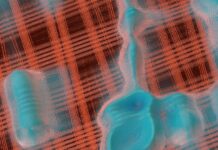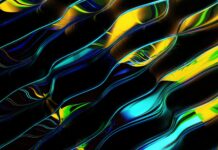A Voxel, a fundamental unit in three-dimensional computer graphics and volumetric data representation, plays an integral role in various fields, including computer-aided design, medical imaging, video games, and scientific simulations. Stemming from the fusion of the words “volume” and “pixel,” the term “voxel” encapsulates the essence of a volumetric pixel, serving as a building block for the three-dimensional visual and computational realm. To comprehend the significance of voxels, one must delve into their properties, applications, and the underlying technologies that have propelled them to the forefront of modern digital representation.
At its core, a voxel represents a point in 3D space, akin to how a pixel signifies a point in a two-dimensional plane. However, unlike pixels that are confined to a flat grid, voxels inhabit a volumetric lattice, forming a grid that extends along the X, Y, and Z axes. This tridimensional arrangement allows voxels to encapsulate not only color and intensity information but also additional attributes such as density, material composition, and even time-dependent properties. By harmonizing these attributes within a single voxel, a richer and more intricate representation of objects, scenes, or phenomena emerges.
The utilization of voxels extends across a spectrum of domains, each harnessing their unique capabilities to drive innovation and insight. In medical imaging, for instance, voxels enable the reconstruction of detailed three-dimensional representations of anatomical structures from CT scans and MRI data. By assembling a series of voxel data points, medical professionals gain a comprehensive view of internal organs and tissues, facilitating accurate diagnoses and treatment plans. This capability transcends into the realm of scientific research, where simulations of physical processes leverage voxels to model complex interactions and visualize intricate systems.
Furthermore, the entertainment industry has harnessed the power of voxels to revolutionize digital experiences. Video games, for instance, employ voxel-based rendering techniques to craft expansive, immersive worlds that can be dynamically altered in real-time. Voxels allow for destructible environments, volumetric lighting, and intricate material interactions, thereby enhancing realism and interactivity. Titles like “Minecraft” have achieved iconic status by capitalizing on voxel-based terrain generation, enabling players to shape and explore limitless virtual landscapes.
Underlying the manipulation and rendering of voxels lies a bedrock of computational algorithms and technologies. Voxelization, the process of converting continuous geometric shapes into discrete voxel representations, requires careful consideration of trade-offs between accuracy and efficiency. Various voxel data structures, such as octrees and sparse voxel grids, have emerged to optimize storage and computational requirements. Augmented by graphics hardware and parallel processing, real-time voxel rendering has become increasingly feasible, even for complex scenes and simulations.
As technology advances, voxel-based approaches continue to find novel applications, extending beyond traditional graphics and simulations. Additive manufacturing, colloquially known as 3D printing, leverages voxels to guide the deposition of material layer by layer, enabling the creation of intricate physical objects with previously unattainable geometries. In architectural design, voxel-based modeling tools empower architects to experiment with unconventional shapes and explore spatial configurations that challenge conventional design paradigms.
The voxel stands as a pivotal concept that bridges the gap between the pixelated world of two dimensions and the volumetric universe of three dimensions. Its role spans a multitude of domains, from medical imaging to video games, and from scientific simulations to additive manufacturing. The voxel’s ability to encapsulate diverse attributes within a single point in space, combined with advancements in algorithms and hardware, has ushered in an era of intricate and immersive digital experiences. As technology continues to evolve, the voxel’s influence is poised to expand further, reshaping industries and unlocking new possibilities that were once confined to the realm of imagination.
In the realm of creative expression, voxels have also found their niche. Digital artists and designers have embraced voxel-based tools to craft stunning visual artworks and animations. Voxel art, characterized by its blocky and pixelated aesthetic reminiscent of early video games, has gained a significant following in recent years. Artists manipulate individual voxels to create intricate scenes, characters, and landscapes, blurring the lines between traditional art forms and digital craftsmanship. This resurgence of interest in voxel art showcases the versatility of voxels as a medium for self-expression and innovation.
To further explore the technical intricacies of voxels, it’s important to delve into the process of voxelization. Voxelization involves the conversion of continuous geometric shapes, often represented by polygonal meshes, into discrete voxel representations. This conversion is essential for applications that require voxel-based processing or visualization, such as simulations, medical imaging, and certain rendering techniques.
One of the challenges in voxelization is striking a balance between accuracy and computational efficiency. A straightforward approach involves discretizing space into a grid of voxels and then determining which voxels intersect with the input geometry. However, this direct method can be computationally expensive, especially for complex and high-resolution meshes. To mitigate this issue, researchers have developed various algorithms that optimize the voxelization process.
Among these algorithms, the “surface voxelization” technique is widely used. It involves projecting the mesh’s triangles onto the voxel grid and determining which voxels are intersected by each triangle. By only considering voxels near the mesh’s surface, this method reduces the computational load and generates an accurate representation of the object’s exterior. For more intricate voxelization requirements, adaptive schemes and hierarchical data structures, such as octrees, are employed to efficiently capture complex shapes while maintaining computational feasibility.
The marriage of voxel technology with graphics hardware acceleration has unlocked new horizons for real-time voxel rendering. Voxel-based rendering techniques, such as ray tracing and sparse voxel octree-based rendering, have gained traction, offering a potent alternative to traditional polygon-based rendering pipelines. Ray tracing with voxels allows for realistic global illumination, soft shadows, and dynamic reflections in scenes. Sparse voxel octree-based rendering, on the other hand, optimizes memory usage by allocating more voxels in regions of interest and fewer in less significant areas.
Voxel-based techniques have even extended their influence into the field of virtual reality (VR) and augmented reality (AR). The immersive nature of VR and AR experiences demands sophisticated methods for rendering and interacting with complex 3D environments. Voxels provide a compelling solution by enabling the efficient representation of intricate scenes and facilitating real-time manipulation and interaction. Voxel-based rendering in VR/AR environments ensures a high level of detail and interactivity, enhancing the overall user experience.
In the context of medical imaging, the voxel’s significance cannot be overstated. Modern medical diagnostics rely heavily on technologies like CT scans and MRI, which generate volumetric data sets composed of countless voxels. These data sets allow medical professionals to visualize internal structures in three dimensions, aiding in the diagnosis of ailments, the planning of surgeries, and the monitoring of treatment progress. The ability to segment, analyze, and manipulate voxel-based medical data has become indispensable in modern healthcare.
Looking ahead, the evolution of voxel technology holds exciting prospects. As computing power continues to surge, the complexity of voxel-based simulations and rendering can increase, leading to more realistic and immersive digital experiences. The integration of artificial intelligence and machine learning further enhances voxel-related applications. These technologies can automate voxelization processes, optimize rendering techniques, and even aid in the interpretation of complex voxel data, as seen in automated medical image analysis.
In conclusion, the voxel’s journey from its conceptual inception to its multifaceted applications across diverse fields illustrates the dynamic interplay between computer graphics, computational algorithms, and real-world utility. The voxel’s tridimensional essence serves as a bridge between the simplicity of pixels and the complexity of volumetric data, opening up possibilities for creative expression, scientific exploration, medical advancement, and interactive entertainment. As researchers, engineers, and artists continue to push the boundaries of technology, the voxel stands as a testament to the power of combining imagination with computational innovation.














